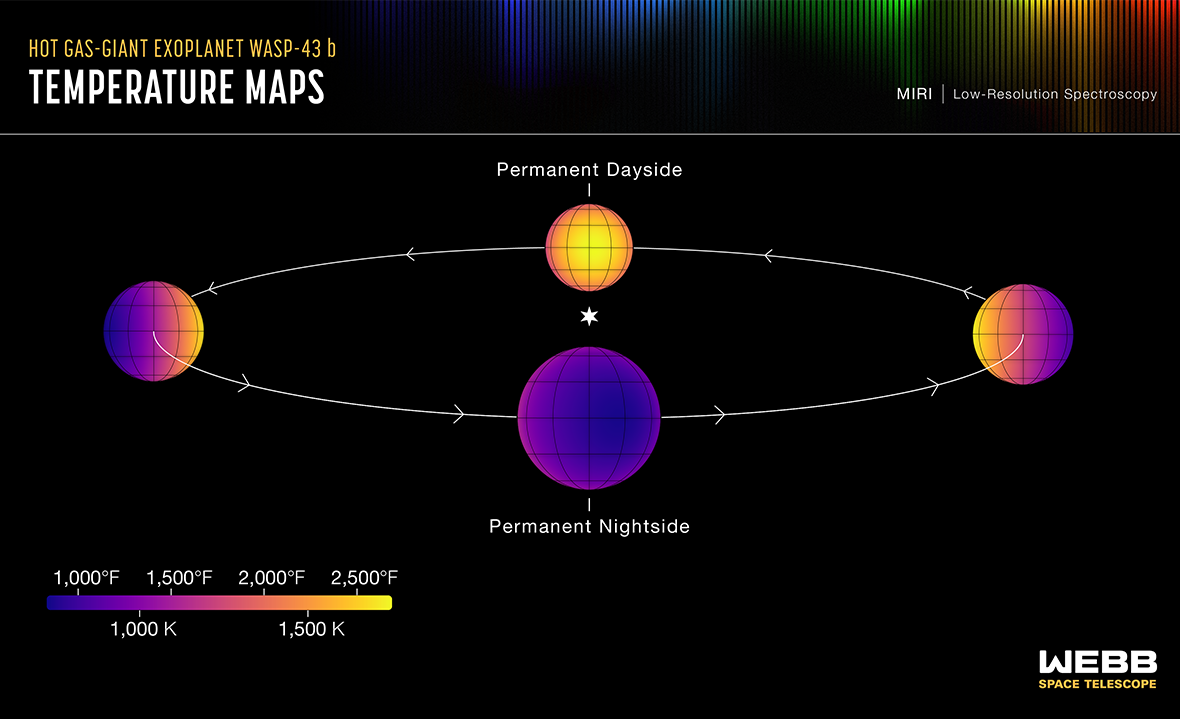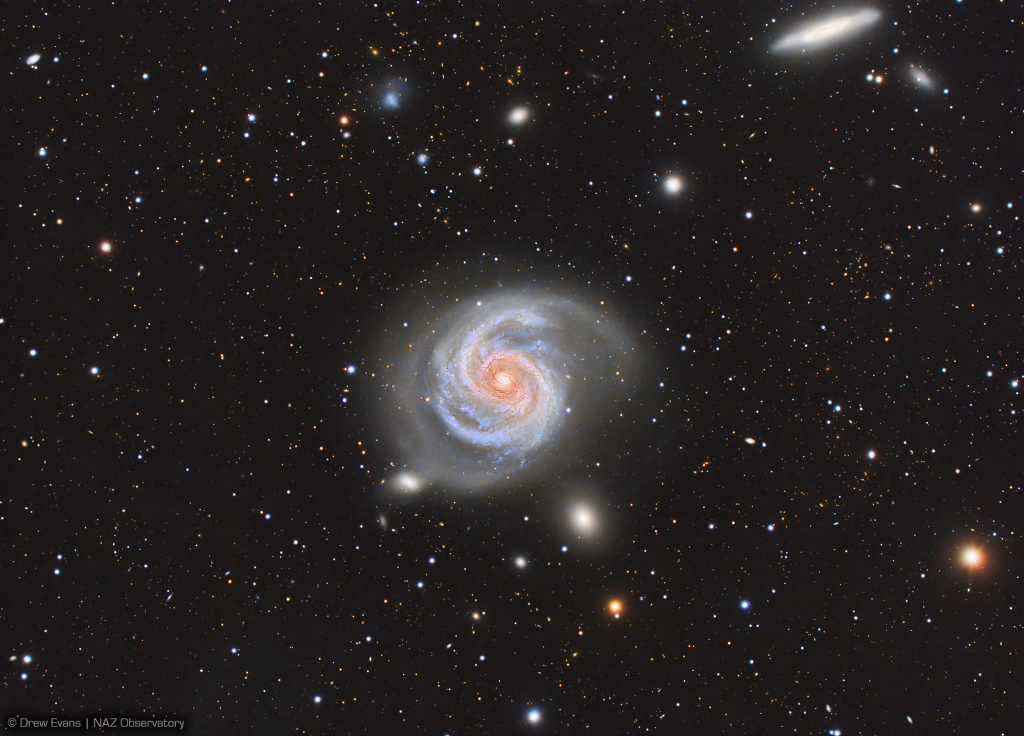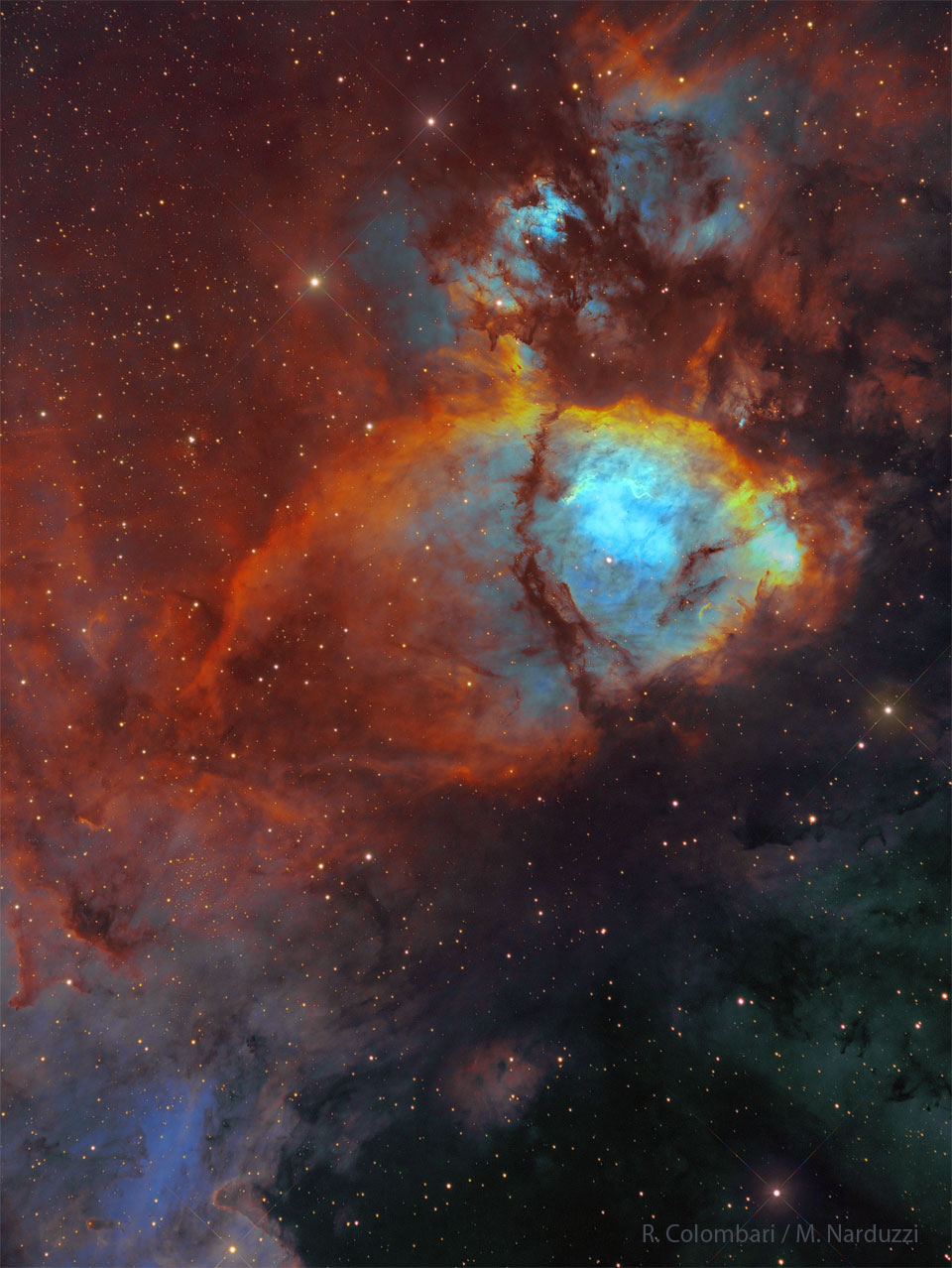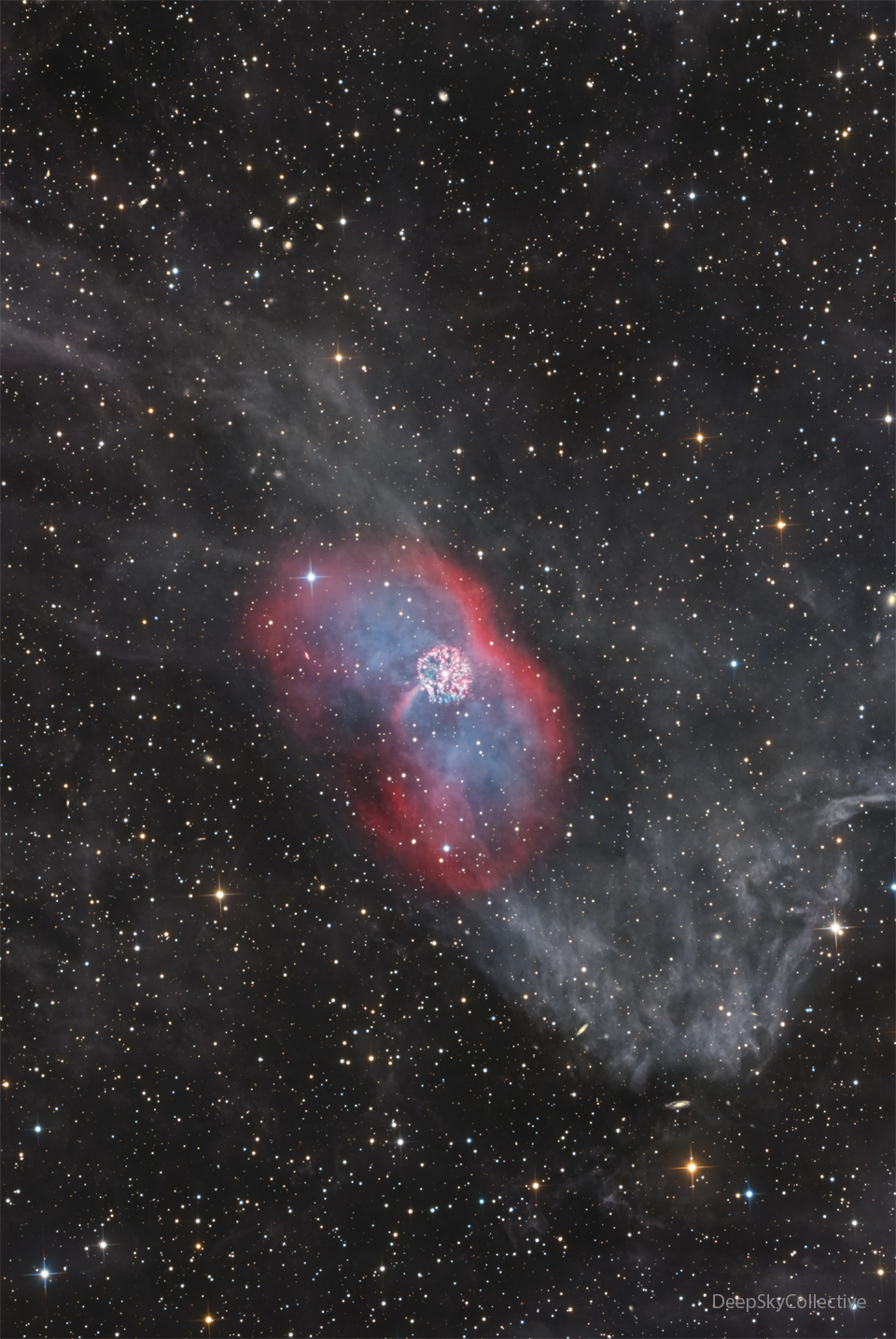Nombre total de pages vues
03/05/2024
SANTé/MEDECINE - Homme ou animal qui est le plus fort ? - Saut en longueur
ASTRONOMY - Temperatures on Exoplanet WASP-43b
2024 May 3
Illustration Credit: NASA, ESA, CSA, Ralf Crawford (STScI)
Science: Taylor Bell (BAERI), Joanna Barstow (The Open University), Michael Roman (University of Leicester)
Explanation: A mere 280 light-years from Earth, tidally locked, Jupiter-sized exoplanet WASP-43b orbits its parent star once every 0.8 Earth days. That puts it about 2 million kilometers (less than 1/25th the orbital distance of Mercury) from a small, cool sun. Still, on a dayside always facing its parent star, temperatures approach a torrid 2,500 degrees F as measured at infrared wavelengths by the MIRI instrument on board the James Webb Space Telescope. In this illustration of the hot exoplanet's orbit, Webb measurements also show nightside temperatures remain above 1,000 degrees F. That suggests that strong equatorial winds circulate the dayside atmospheric gases to the nightside before they can completely cool off. Exoplanet WASP-43b is now formally known as Astrolábos, and its K-type parent star has been christened Gnomon. Webb's infrared spectra indicate water vapor is present on the nightside as well as the dayside of the planet, providing information about cloud cover on Astrolábos.
02/05/2024
SANTé/MEDECINE - Remèdes naturels - Rhume et grippe
SANTé/MEDECINE - Homme ou animal qui est le plus fort ? Poils au cm2
ASTRONOMY - M100: A Grand Design Spiral Galaxy
2024 May 2
Image Credit & Copyright: Drew Evans
Explanation: Majestic on a truly cosmic scale, M100 is appropriately known as a grand design spiral galaxy. The large galaxy of over 100 billion stars has well-defined spiral arms, similar to our own Milky Way. One of the brightest members of the Virgo Cluster of galaxies, M100, also known as NGC 4321 is 56 million light-years distant toward the well-groomed constellation Coma Berenices. In this telescopic image, the face-on grand design spiral shares a nearly 1 degree wide field-of-view with slightly less conspicuous edge-on spiral NGC 4312 (at upper right). The 21 hour long equivalent exposure from a dark sky site near Flagstaff, Arizona, planet Earth, reveals M100's bright blue star clusters and intricate winding dust lanes which are hallmarks of this class of galaxies. Measurements of variable stars in M100 have played an important role in determining the size and age of the Universe.
01/05/2024
SANTé/MEDECINE - Remèdes naturels - Maux de gorge
SANTé/MEDECINE - Homme ou animal qui est le plus fort ? - Espérance de vie
ASTRONOMY - IC 1795: The Fishhead Nebula
2024 May 1
Image Credit & Copyright: Roberto Colombari & Mauro Narduzzi
Explanation: To some, this nebula looks like the head of a fish. However, this colorful cosmic portrait really features glowing gas and obscuring dust clouds in IC 1795, a star forming region in the northern constellation Cassiopeia. The nebula's colors were created by adopting the Hubble color palette for mapping narrowband emissions from oxygen, hydrogen, and sulfur atoms to blue, green and red colors, and further blending the data with images of the region recorded through broadband filters. Not far on the sky from the famous Double Star Cluster in Perseus, IC 1795 is itself located next to IC 1805, the Heart Nebula, as part of a complex of star forming regions that lie at the edge of a large molecular cloud. Located just over 6,000 light-years away, the larger star forming complex sprawls along the Perseus spiral arm of our Milky Way Galaxy. At that distance, IC 1795 would span about 70 light-years across.
30/04/2024
SANTé/MEDECINE - Homme ou animal qui est le plus fort - Vision : les rapaces nous dépassent !
ASTRONOMY - GK Per: Nova and Planetary Nebula
2024 April 30
Image Credit & Copyright: Deep Sky Collective
Explanation: The star system GK Per is known to be associated with only two of the three nebulas pictured. At 1500 light years distant, Nova Persei 1901 (GK Persei) was the second closest nova yet recorded. At the very center is a white dwarf star, the surviving core of a former Sun-like star. It is surrounded by the circular Firework nebula, gas that was ejected by a thermonuclear explosion on the white dwarf's surface -- a nova -- as recorded in 1901. The red glowing gas surrounding the Firework nebula is the atmosphere that used to surround the central star. This gas was expelled before the nova and appears as a diffuse planetary nebula. The faint gray gas running across is interstellar cirrus that seems to be just passing through coincidently. In 1901, GK Per's nova became brighter than Betelgeuse. Similarly, star system T CrB is expected to erupt in a nova later this year, but we don't know exactly when nor how bright it will become.
SANTé/MEDECINE - Procédé révolutionnaire dans la lutte contre le cancer 3/6 : Les avantages de cette révolution
Moins d’effets secondaires, plus d’espoir Contrairement aux traitements traditionnels, cette méthode n’endommage pas les tissus sains. Les p...

-
2022 September 26 All the Water on Planet Earth Illustration Credit: Jack Cook, Adam Nieman, Woods Hole Oceanographic Institution ; Data ...
-
La majorité des grêlons qui tombent sous les orages et les averses ne pèsent que quelques grammes. Mais il y a quelques années, c'est un...










